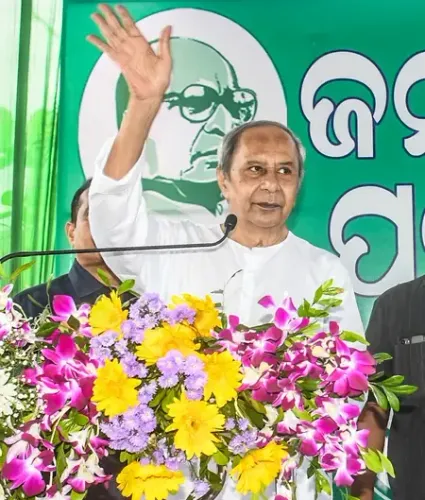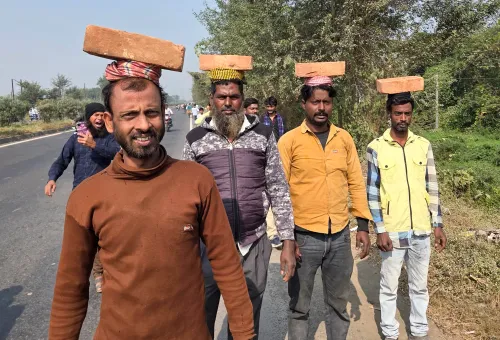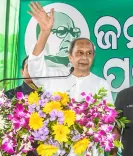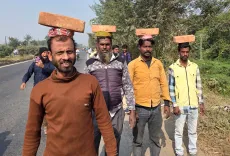What is the Truth Behind Pakistan's False Narrative Factory?
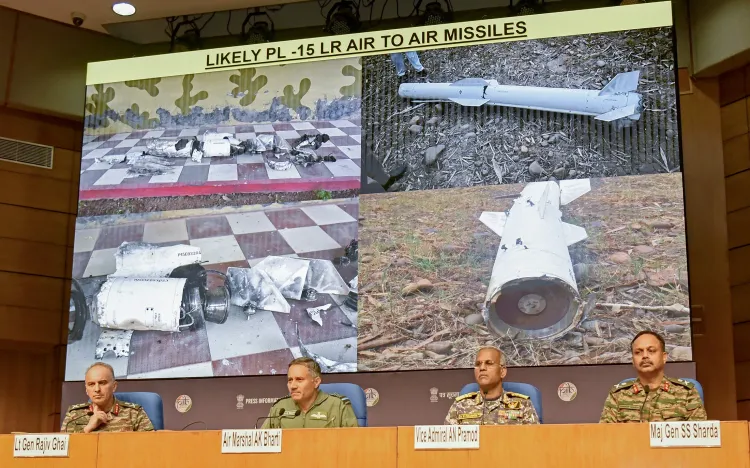
Synopsis
Key Takeaways
- Operation Sindoor targeted Pakistan's terror infrastructure.
- Pakistan resorted to misinformation post-defeat.
- Media manipulation was used to depict false narratives.
- Turkiye and China supported Pakistan in its campaign.
- Understanding misinformation is essential in geopolitics.
New Delhi, May 14 (NationPress) India’s Operation Sindoor delivered a significant setback to Pakistan, dismantling its terror infrastructure and leaving its political leaders humiliated and exposed on the global stage.
The Indian military effectively targeted its terrorist strongholds as well as Pakistani air bases in response to escalations; however, the rogue nation remained true to form and continued to provoke India with aggressive rhetoric.
After suffering a defeat on the battlefield, Pakistan sought to create a new front and attempted to propagate false narratives regarding India’s supposed ‘defeat’ and the downing of its fighter jets, aiming to portray itself as a ‘winner’ in the digital realm. Allegedly, some of its allied nations, including Turkiye and China, assisted in promoting this fabricated narrative through either direct or tacit means.
An X user meticulously documented how Pakistan launched a barrage of ‘information warfare’ and propagated extensive propaganda to tarnish India’s image and gain an advantage.
As India targeted its prominent airstrip and airbases, Pakistan exploited its connections to Western media to disseminate anti-India propaganda. Pakistani journalists at CNN, Reuters, Bloomberg, and NYT began publishing anti-India narratives filled with baseless claims and lacking any evidence, according to the X user.
Instances of data manipulation and doctored videos were employed to support the anti-India narrative.
On May 8, the DG ISPR spread its first official lie by asserting that the Pakistan Army did not attack civilian areas in Amritsar and accused India of engaging in a ‘false flag’ operation. The following day, they boasted about celebrating Pakistan's attack in Amritsar.
DG ISPR, while addressing the media, showcased a doctored video of Wing Commander Vyomika Singh purportedly 'admitting' to Pakistan's assault; however, the Pakistani Army spokesperson conveniently omitted a segment of the video where the officer detailed how Pakistan targeted civilian zones.
On May 1, 2025, Pakistan's ISPR initiated a disinformation campaign by circulating 'classified RAW documents' aimed at discrediting India.
On May 11, DGISPR utilized a two-year-old image from 2023 to falsely depict their Navy's preparedness against India.
Moreover, DGISPR distorted a news clip from a credible Indian news channel, claiming Indian airfields were destroyed when, in fact, the original footage concerned an attack on Pakistan's airfield by Indian forces.
While the Pakistani establishment, aided by influencers, propagated a mix of misinformation, it was the DGISPR that formally disseminated the false propaganda.
In another blatant distortion, DGISPR presented an edited news clip and falsely claimed that Indian media had acknowledged the destruction of their own airbases.
The Pakistani government's official accounts even went as far as sharing a video game clip, asserting it depicted them shooting down Indian aircraft, later revealed to be footage from a computer game.
Pakistan also concocted a fake CNN graphic illustrating casualty statistics that the U.S.-based channel never published.
Social media accounts based in Pakistan contributed to the false narrative, fabricating stories about the capture of Wing Commander Shivangi Singh and disseminating fake images across various platforms. Gulf-based channels initially reported this fabricated narrative but later issued clarifications.
Eventually, DGISPR acknowledged this deception and officially clarified that such events did not occur.
A video clip from 2019 was also misrepresented as evidence of India pleading for a ceasefire with white flags at two military posts.
The Pakistani military’s information wing also resurfaced numerous videos from the past to gain a psychological edge against India; however, all of these claims were debunked and discredited by India.
In one instance, old footage of sectarian clashes in Khyber Pakhtunkhwa from 2024 was recirculated as proof of an attack on Srinagar airbase, which was dismissed by PIB as part of Pakistan’s disinformation campaign.
In one of the most audacious lies, Pakistan claimed to have shot down five Indian fighter jets and circulated doctored images as “proof.” These turned out to be photographs from a 2024 MiG-29 crash in Rajasthan and a 2014 Su-30MKI crash in Maharashtra.
Despite its battlefield defeat, Pakistan attempted to stage a narrative in the information warfare arena and committed fully to its array of falsehoods; however, its information apparatus ultimately faced exposure.
Notably, Pakistan wasn’t operating in isolation. It received assistance from global allies, reportedly including Turkiye and China, in disseminating false propaganda against India.
The Indian armed forces unequivocally stated that Pakistan utilized Turkiye drones to target multiple installations in India. Pakistan's reliance on China for military resources is widely acknowledged.
Turkiye instigated Pakistan’s ‘information war’ by amplifying false narratives, utilizing its state-funded media and social media channels.
Three specific instances exemplify Turkiye’s overt role in advancing Pakistani propaganda.
Turkish broadcaster TRT World echoed DG ISPR’s false claims, such as the destruction of Indian airbases, despite a lack of evidence. Its state-funded agencies, TRT World and Anadolu Agency, mirrored the Pakistani narrative, infused with biased reporting and unverified assertions, aimed at casting India in a negative light.
TRT provided a platform for Nasir Qadri, a Pakistani national, who propagated the Israel-India alliance narrative during the India-Pakistan conflict in 2025. Qadri accused India of adopting Israel’s settler-colonial strategies, fabricated by a transnational coalition involving the Muslim Brotherhood, Pakistan, and Jamaat-e-Islami.
Turkiye’s modern info-warfare accounts on X retweeted and translated ISPR clips and Pakistani propaganda, thereby augmenting its global circulation and legitimacy.
Significantly, the Centre recently imposed a ban on this X account of the Turkiye broadcaster, demanding a halt to disinformation and urging verification of sources.
China, regarded by Pakistan as its close ally, also backed its online offensive against India. A multitude of Chinese social media accounts circulated a variety of misleading news, along with fabricated images and videos, to bolster their claims against India.
Pakistan's military is heavily reliant on Chinese weaponry, with approximately 80 percent of its arsenal believed to be manufactured in China. Chinese missile systems like HQ-9 and HQ-16, along with PL-15 missiles, were utilized by Pakistan during the conflict.
Bangladesh also collaborated with Pakistan in promoting an anti-India narrative. Numerous misinformation posts were shared by various Bangladeshi accounts, attempting to ‘justify’ the false claims made by the Pakistani military and put India in a defensive position through deceptive propaganda.
While Bangladeshi social media accounts circulated false reports, some media portals, including Ekattor and Jamuna TV, sought to legitimize the campaign by providing a particular spin on the news.
They claimed that Indian forces were assaulting Bangladeshi civilians during Operation Sindoor, utilizing doctored images from unrelated conflicts to support their assertions.


